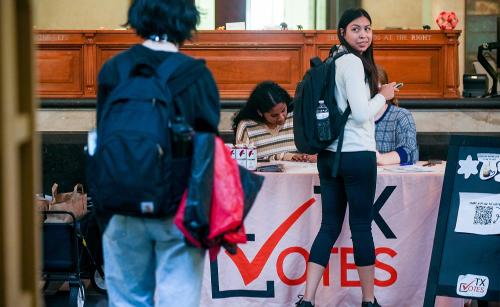The United States is one of the most popular destinations for immigrants throughout the world, and a number of illegal immigrants now live in the United States under various conditions. Indeed, according to the U.S. immigration authority, as of 2009, approximately seven million illegal immigrants are estimated to live in the United States, representing approximately 2.3 percent of the U.S. population (Hoefer, Rytina, & Baker, 2010).
Partly as a result of the country’s popularity among prospective immigrants, Americans are increasingly concerned about the economic and social problems that accompany illegal immigration (Smith & Edmonston, 1998), especially since the late 1980s, following the disruption of the communist system in eastern European countries (Jandl, 2007) and the acceleration of the processes of globalization (Law, 1997). Further, the media, non-governmental organizations (NGOs), and law enforcement agencies are concerned about real and potential exploitation of immigrants, the involvement of organized crime groups in illegal immigration, and inhumane immigration processes (Bales, 2005; Hughes, 2000; Raymond et al., 2002; Richard, 1999; Schneider et al., 2004). These organizations tend to pay more attention to illegal immigration in which women are involved, using the term sex trafficking (Jahic & Finckenauer, 2005; Weitzer, 2007). Sex trafficking is a significant problem and is described as “the most common form of modern-day slavery” (Walker-Rodriguez & Hill, 2011). Recently a vast body of journalistic literature has been written, much of which sensationalizes the phenomenon; this literature has allowed even ordinary people to discover what sex trafficking is and how grotesque the process is, regardless of whether their knowledge is based on reliable data (Bales & Soodalter, 2009; DeStefano, 2007; Kara, 2009).
However, there is little decent scholarly work (Zhang et al., 2007) on sex trafficking to the United States. As with journalistic literature, the available studies on sex trafficking concentrate on several anecdotal and extreme cases of sex trafficking, rather than shedding light on the diverse nature and realities of sex trafficking (Bales, 2005; Hughes, 2000; Raymond et al., 2001). Many studies have been criticized for their unreliable data. In addition, though newspaper articles, government reports, and ethnographic observations have claimed that various ethnic groups are involved in sex trafficking, there is very little scholarly work that examines sex trafficking among certain ethnic groups (Zhang et al., 2007). The biased and scant scholarly work regarding sex trafficking in the United States, even if it is unintentional, appears to have hampered the ability of American society and policymakers to comprehend sex trafficking. Therefore, to understand the spectrum of sex trafficking, it is essential to conduct more empirical research studies based on unbiased data, covering diverse ethnic groups. In this respect, this study attempts to deal with the supposed sex trafficking of Korean women, which has not been thoroughly addressed, despite the fact that law enforcement authorities have registered concerns about it.


